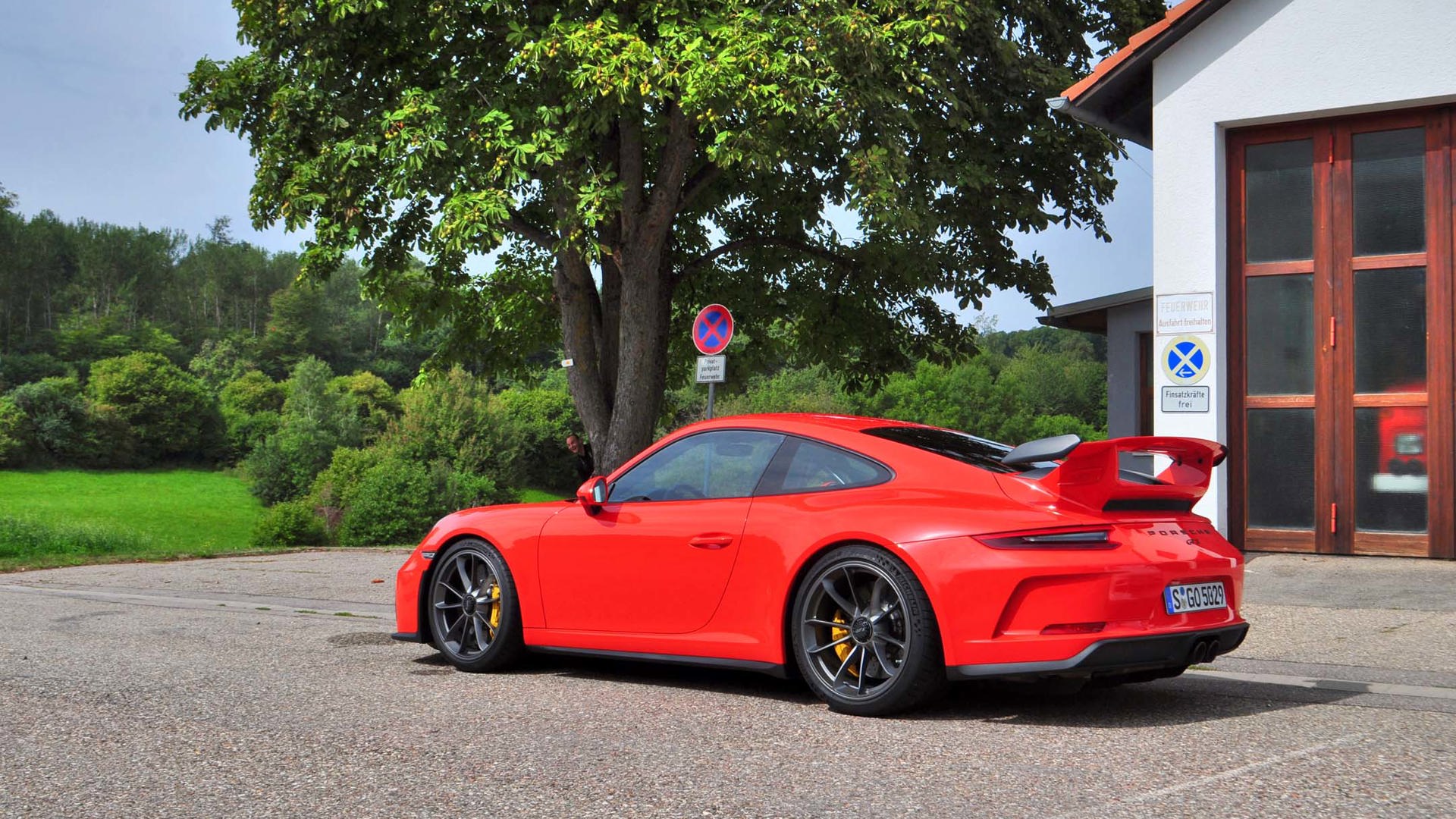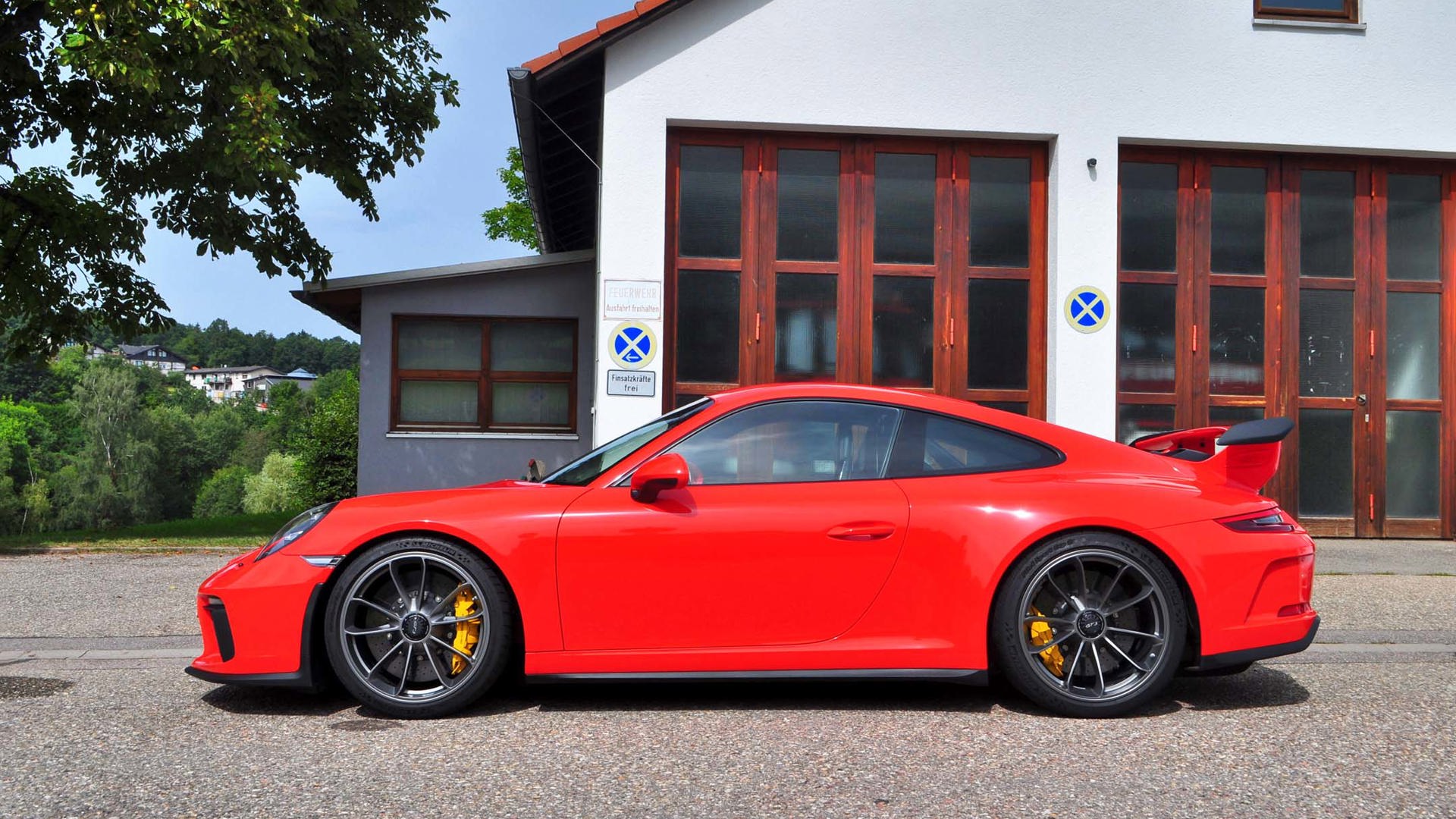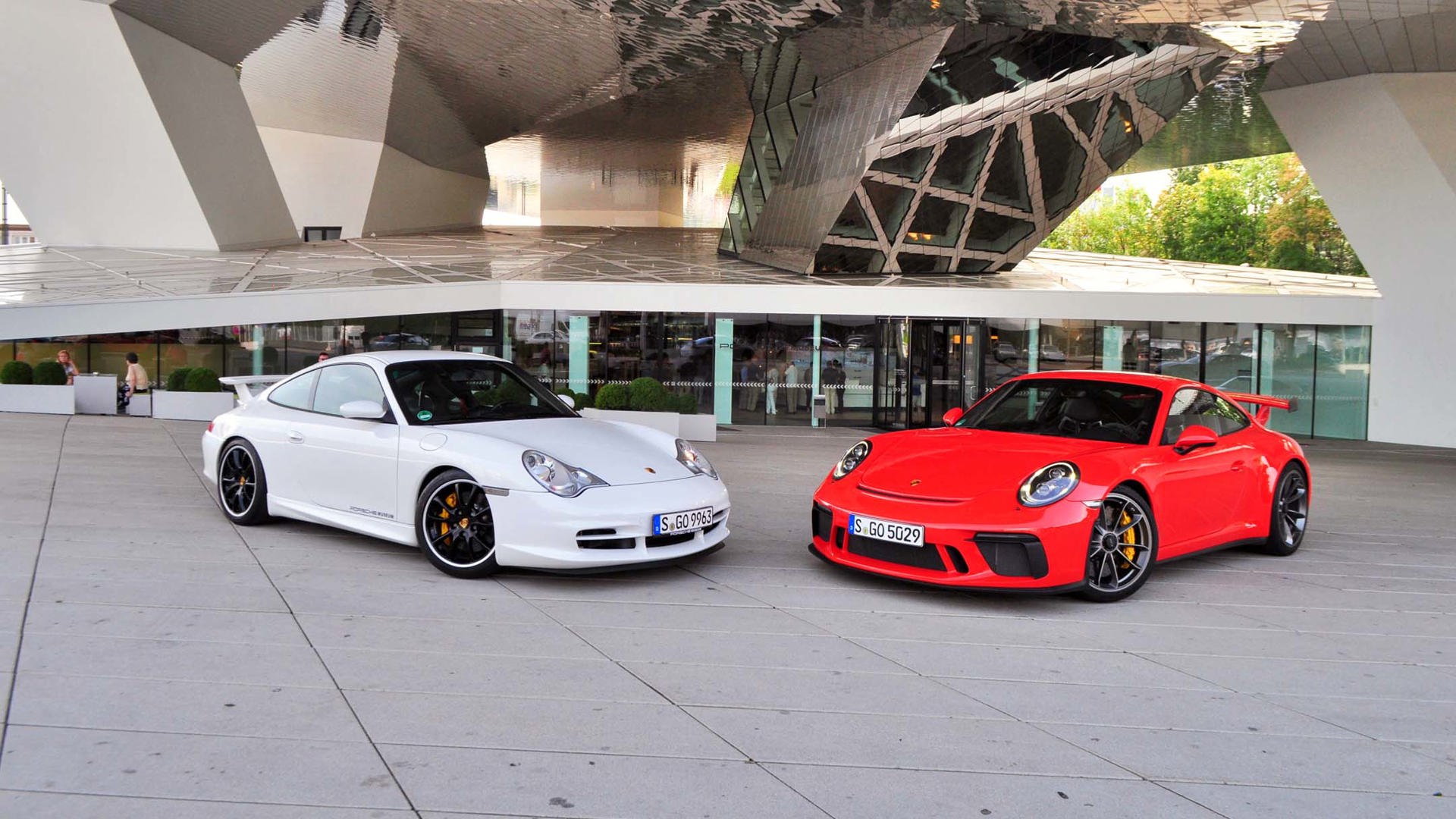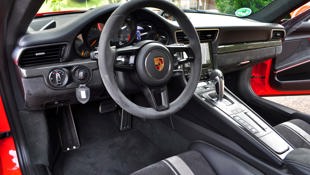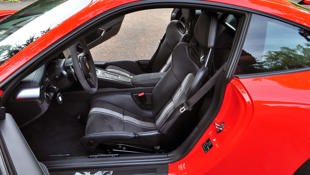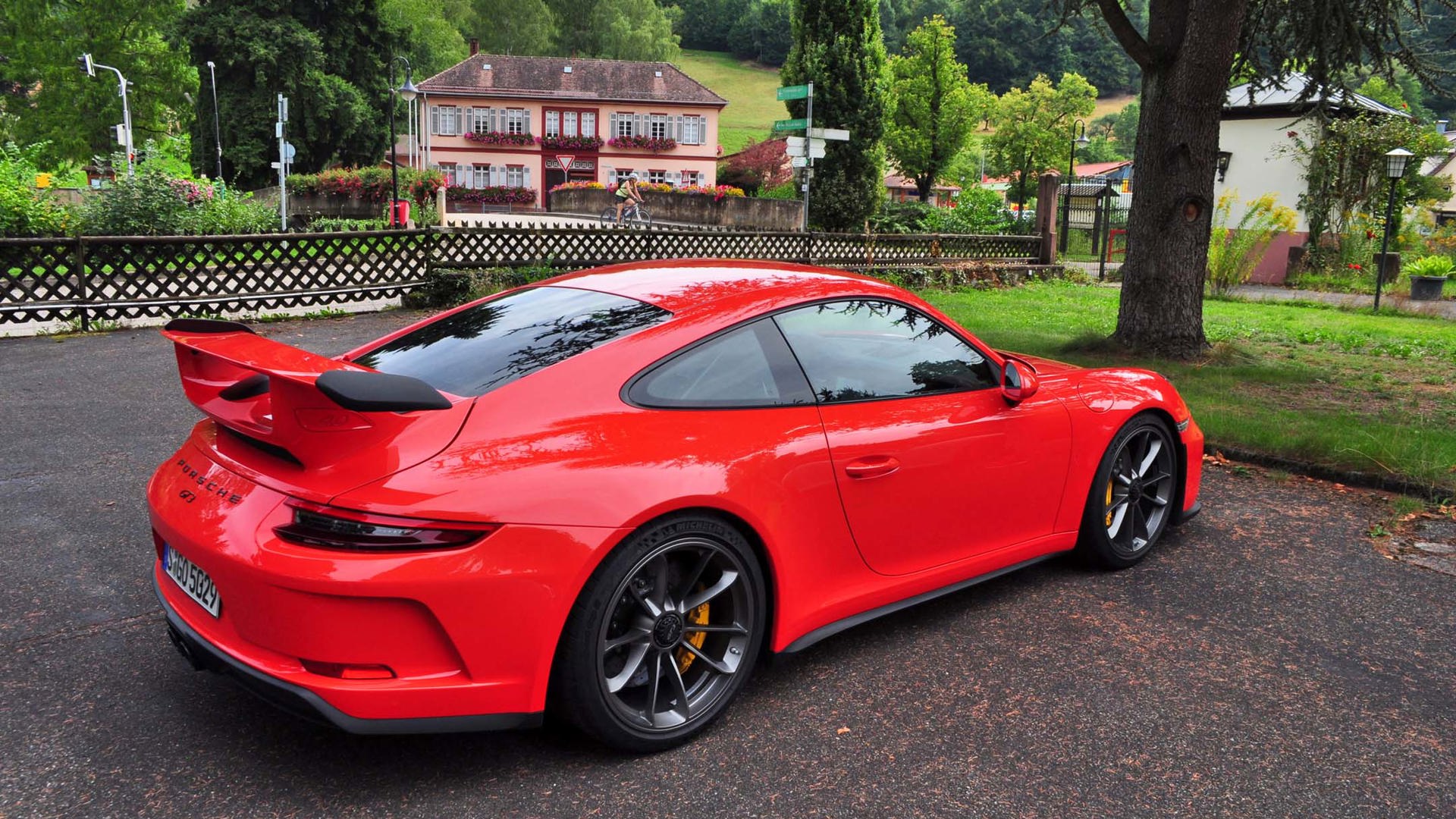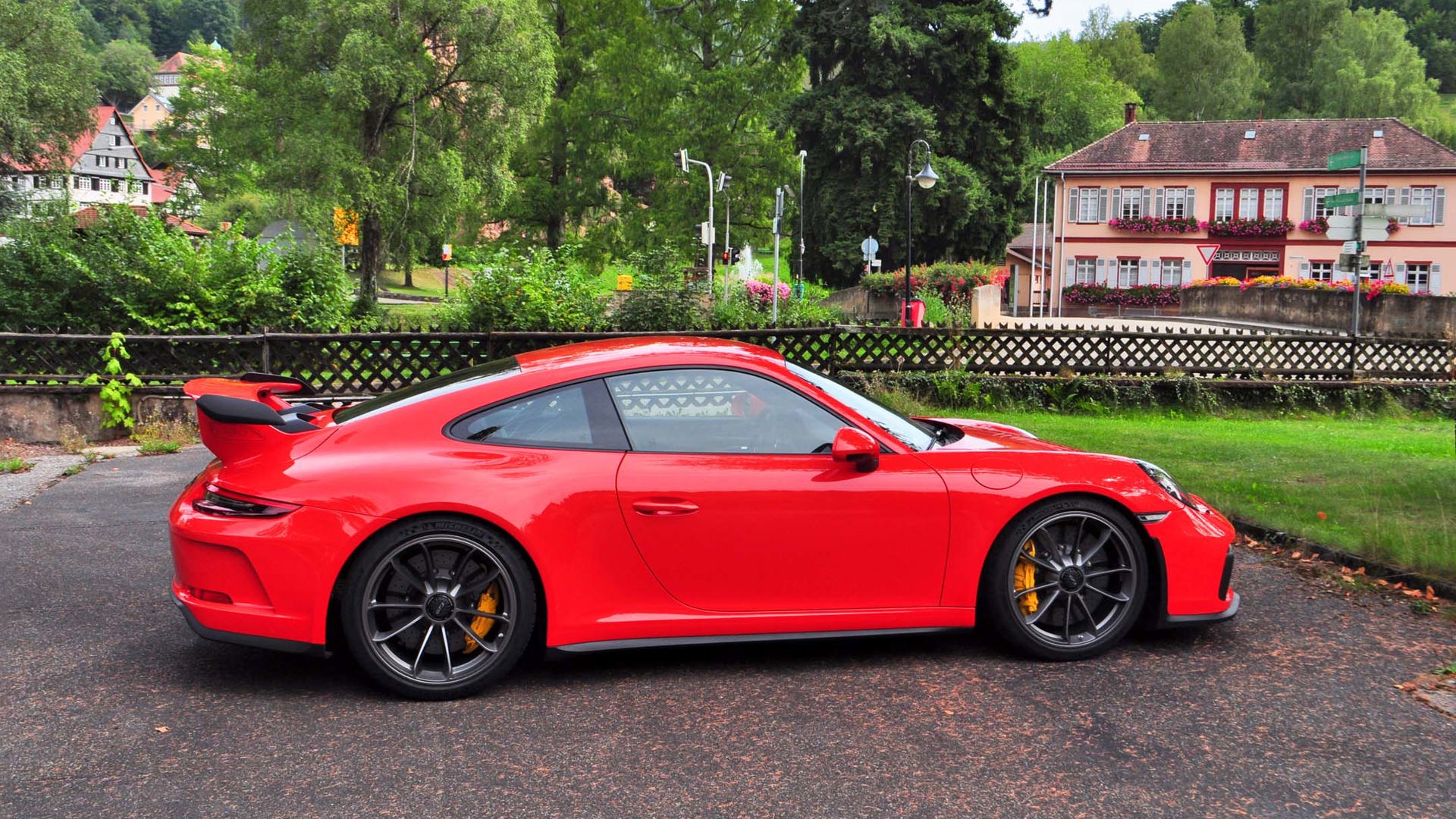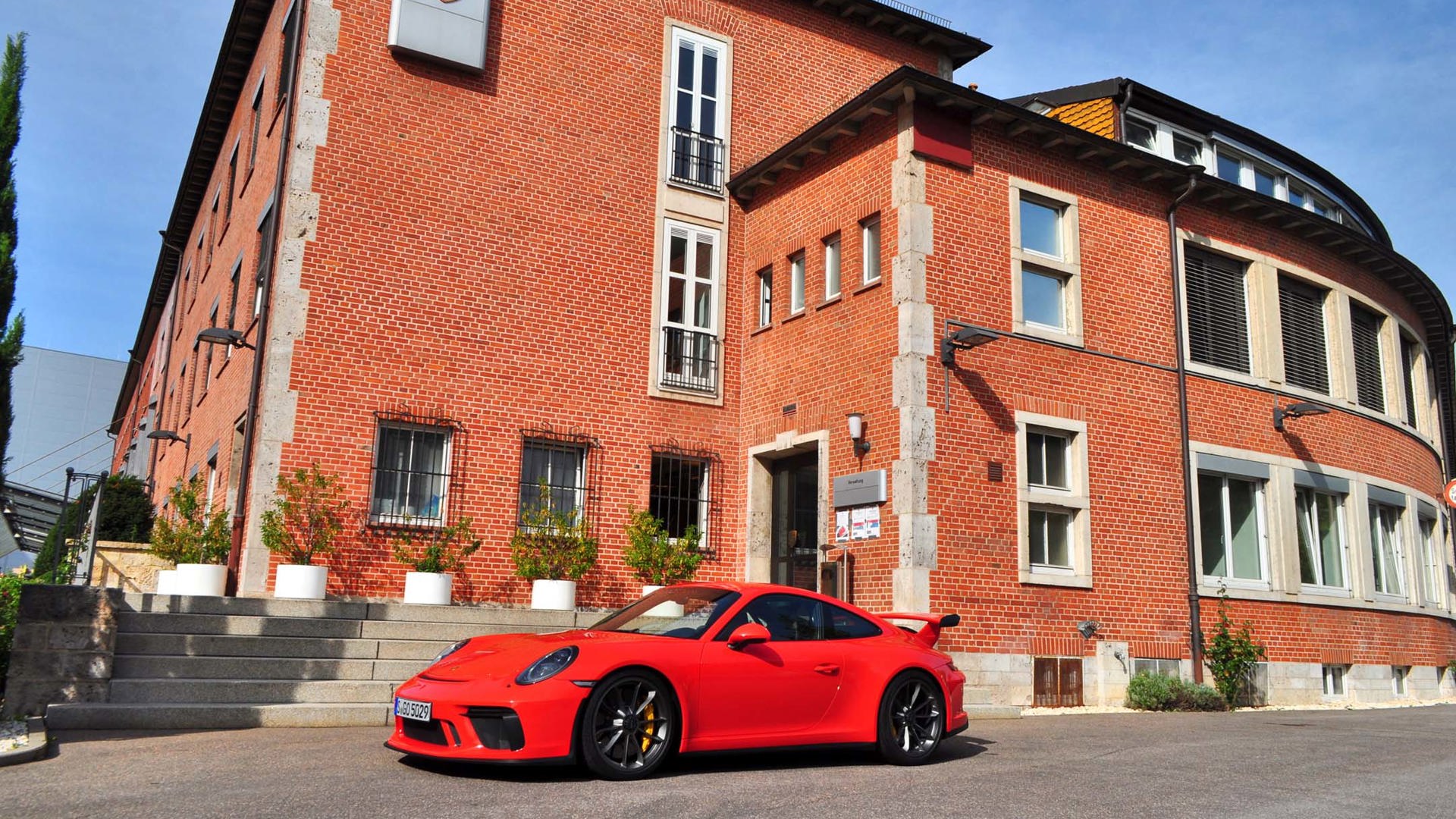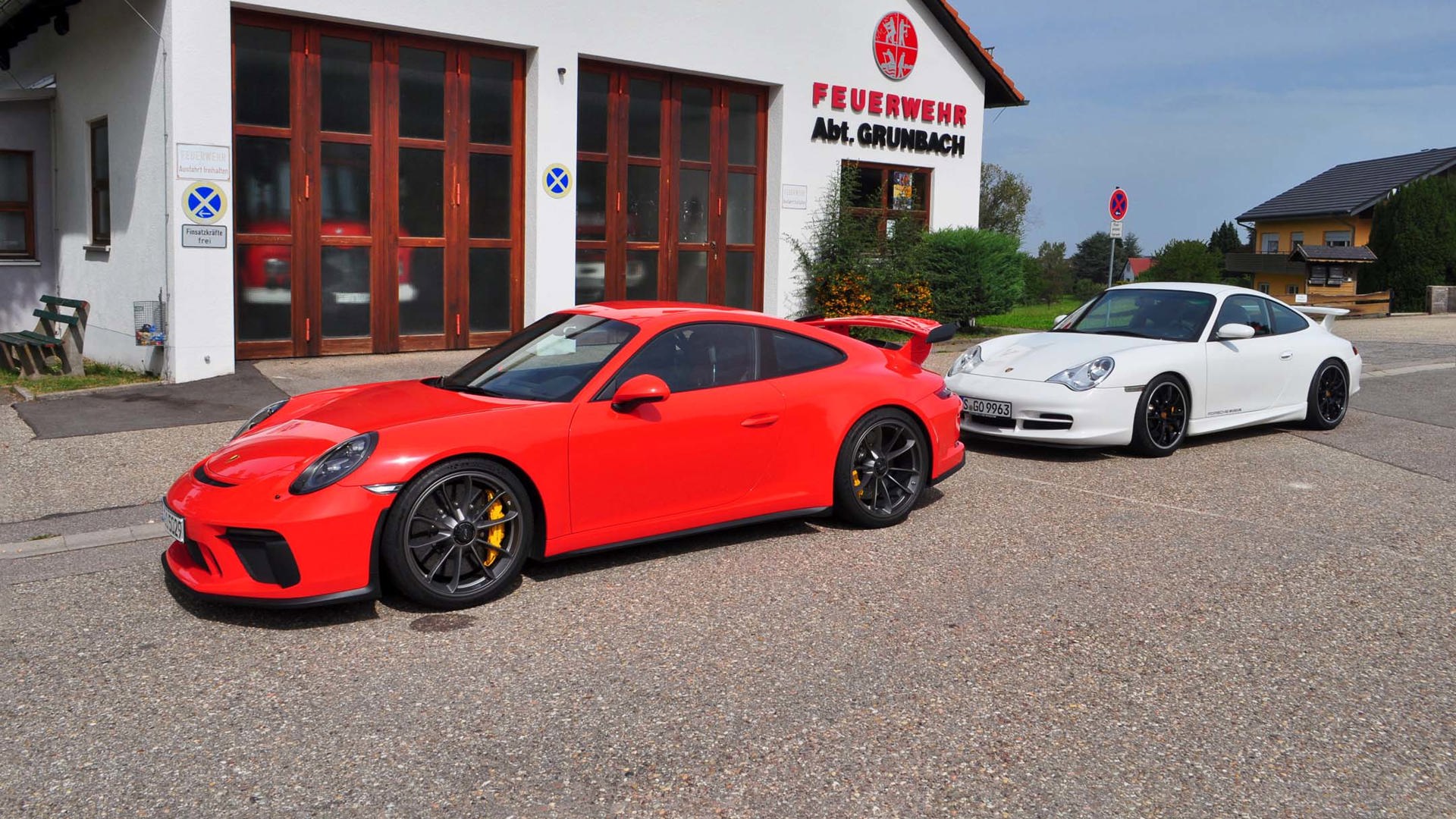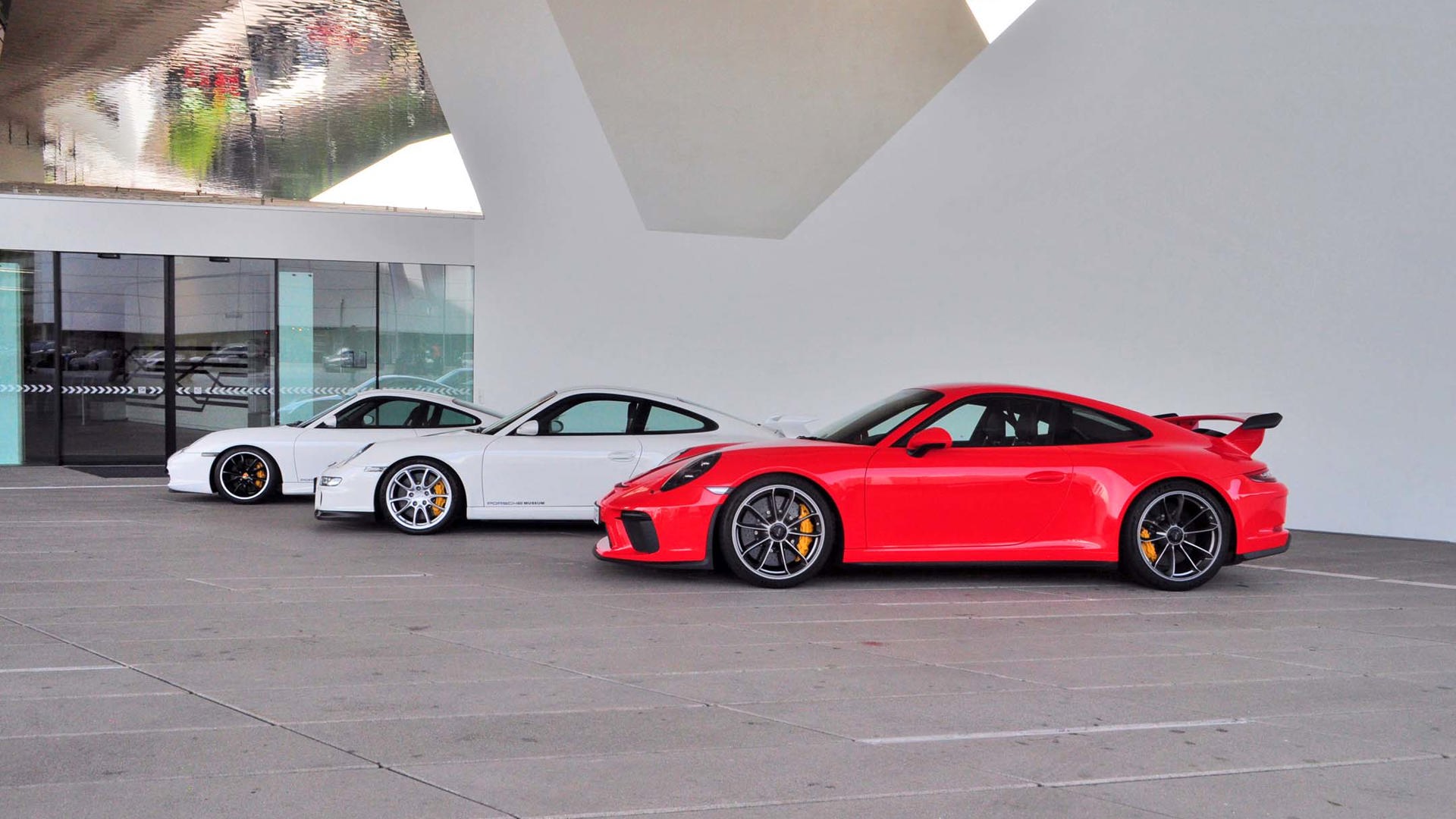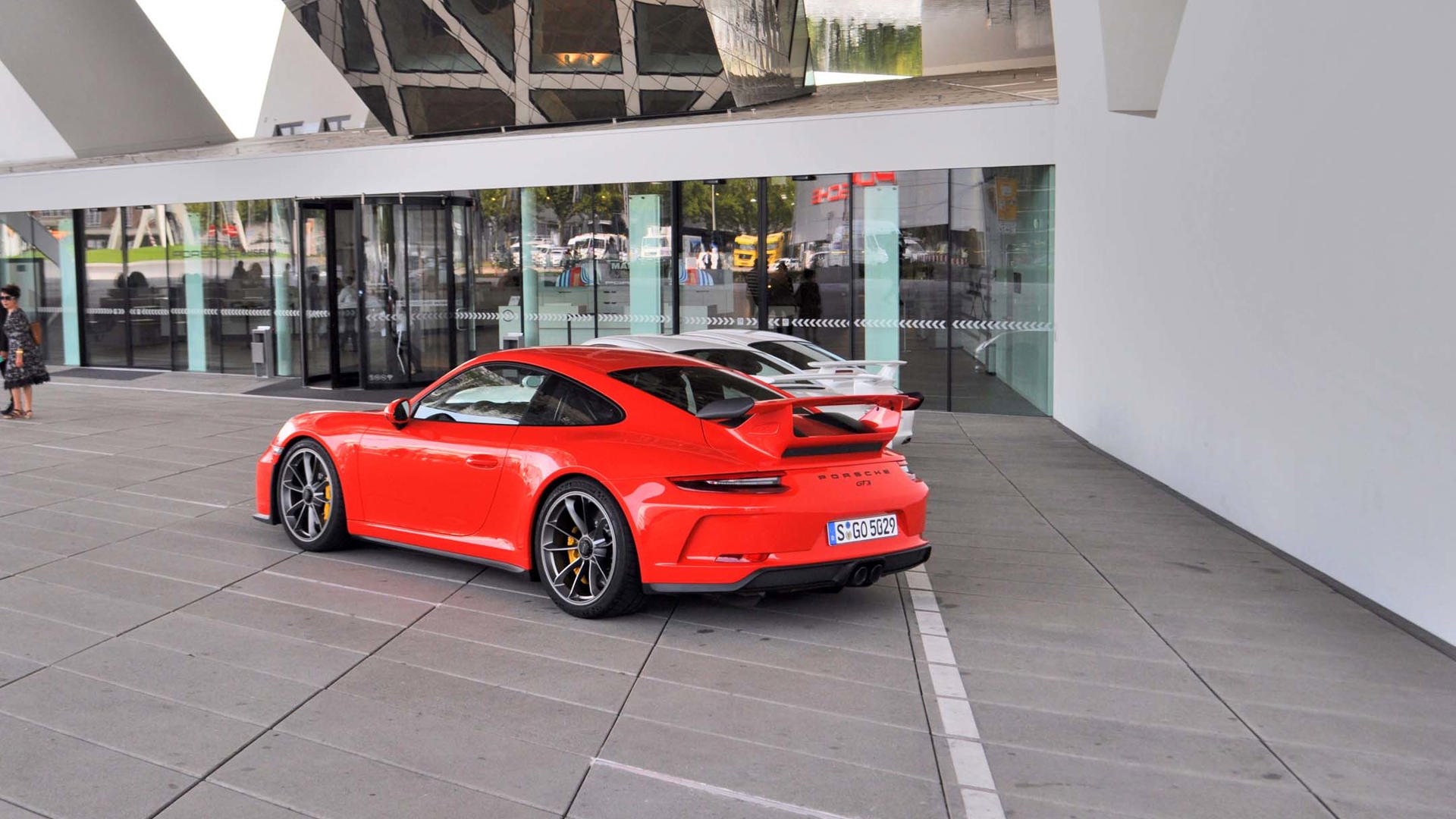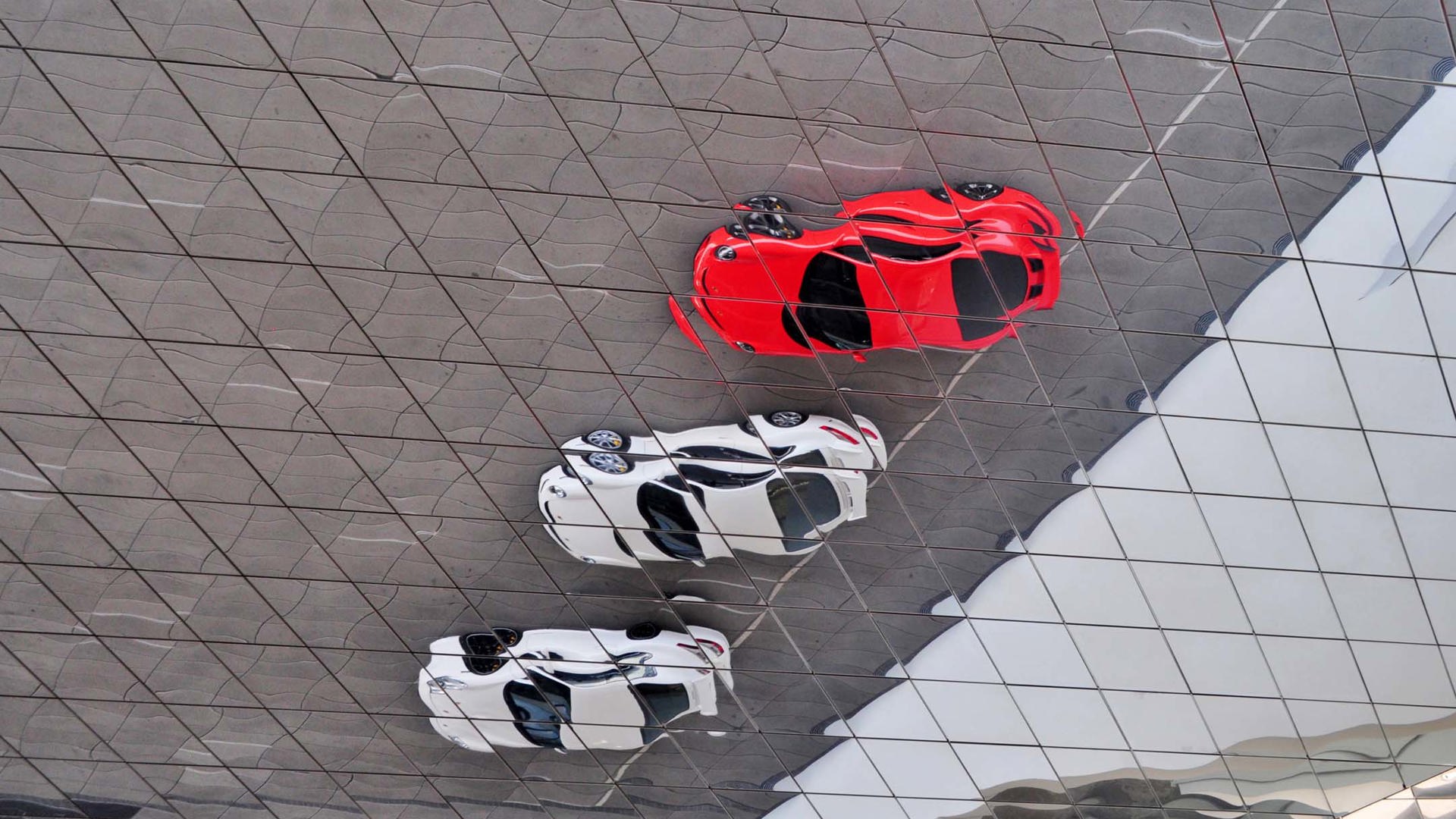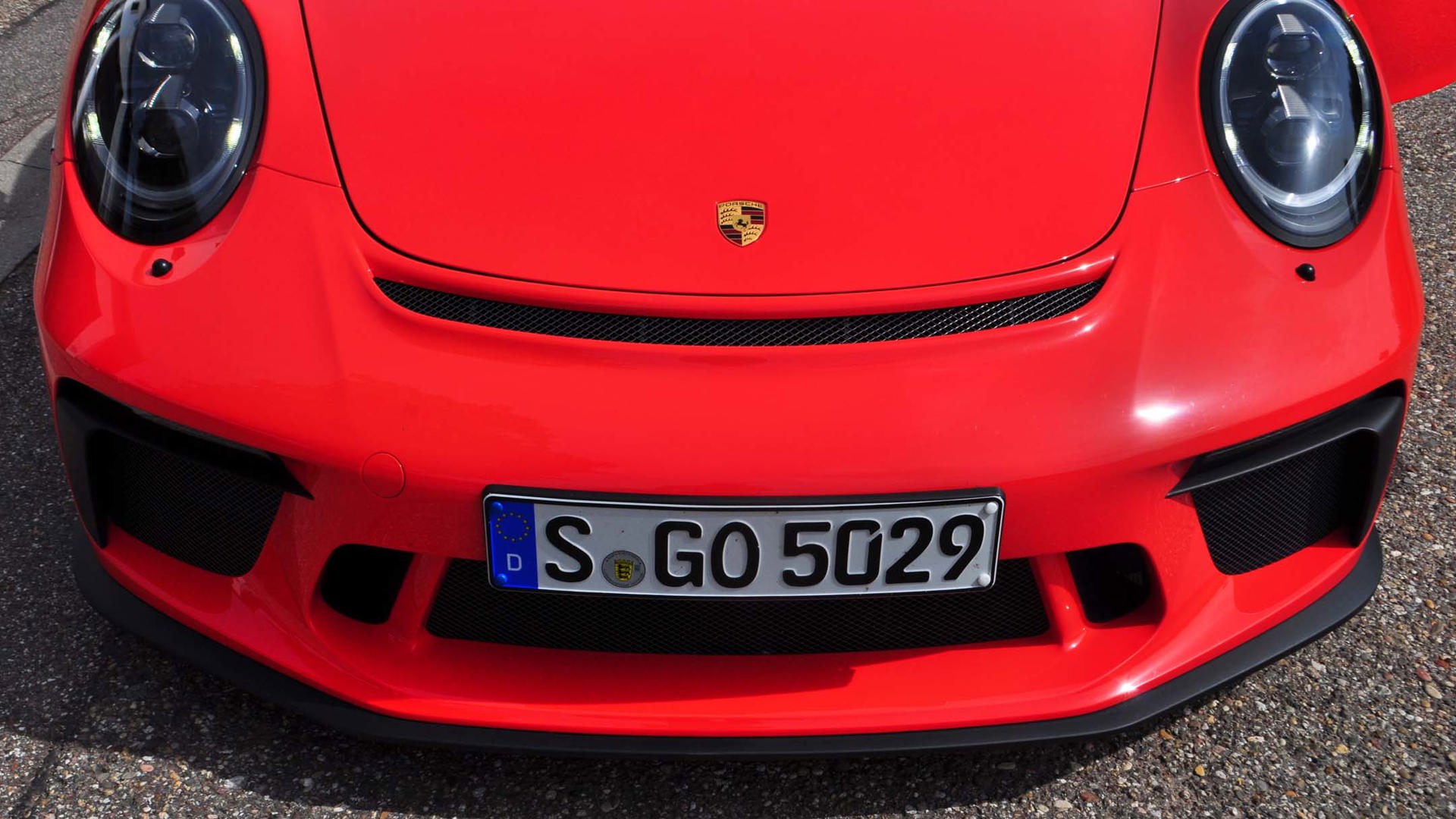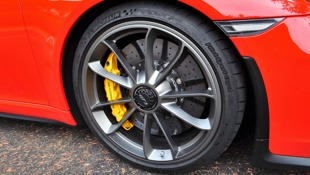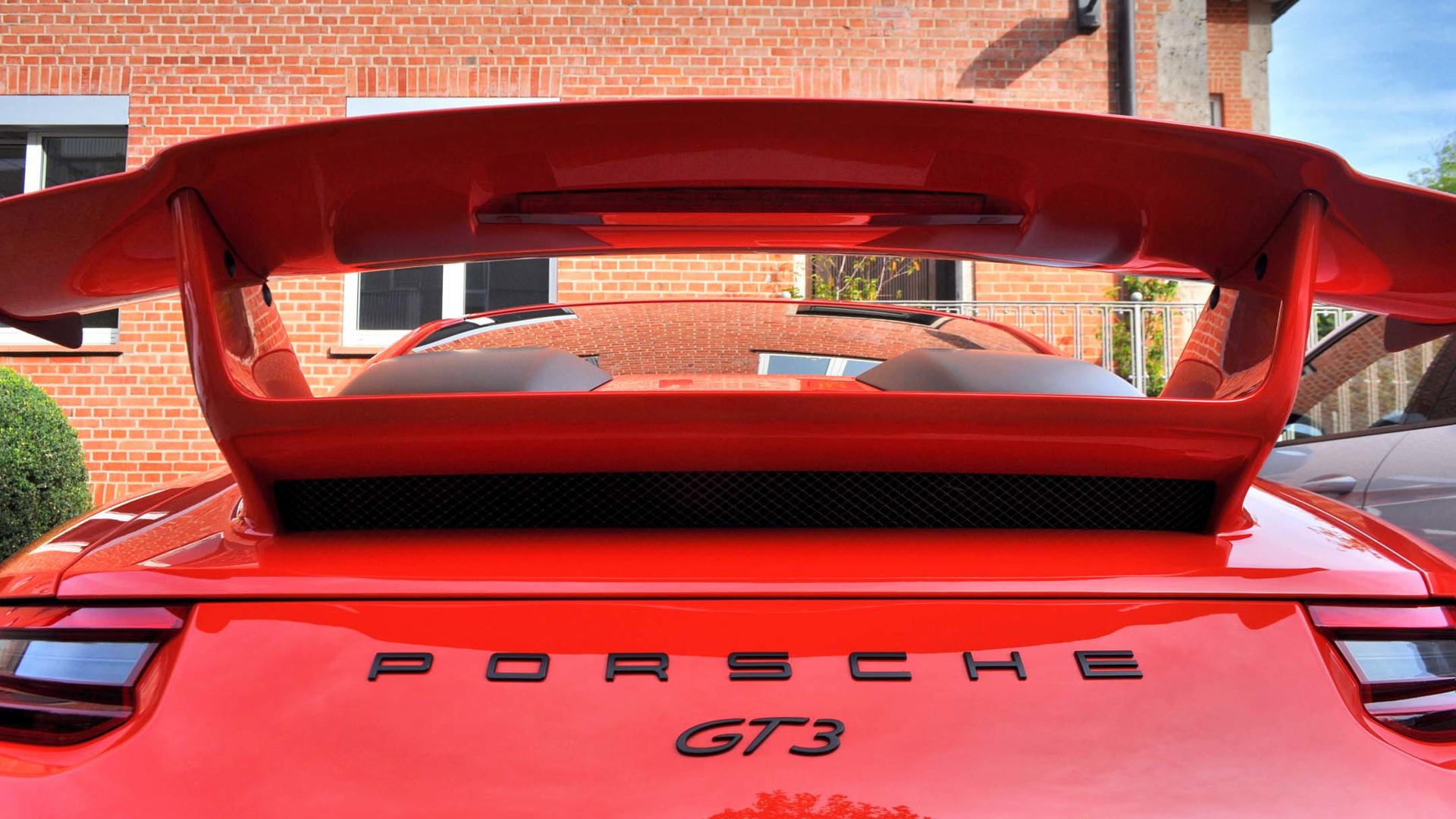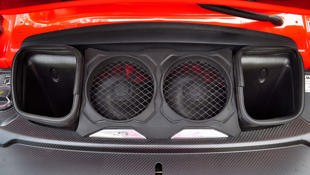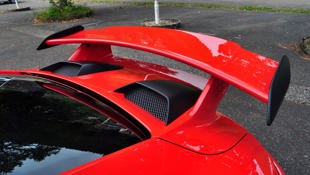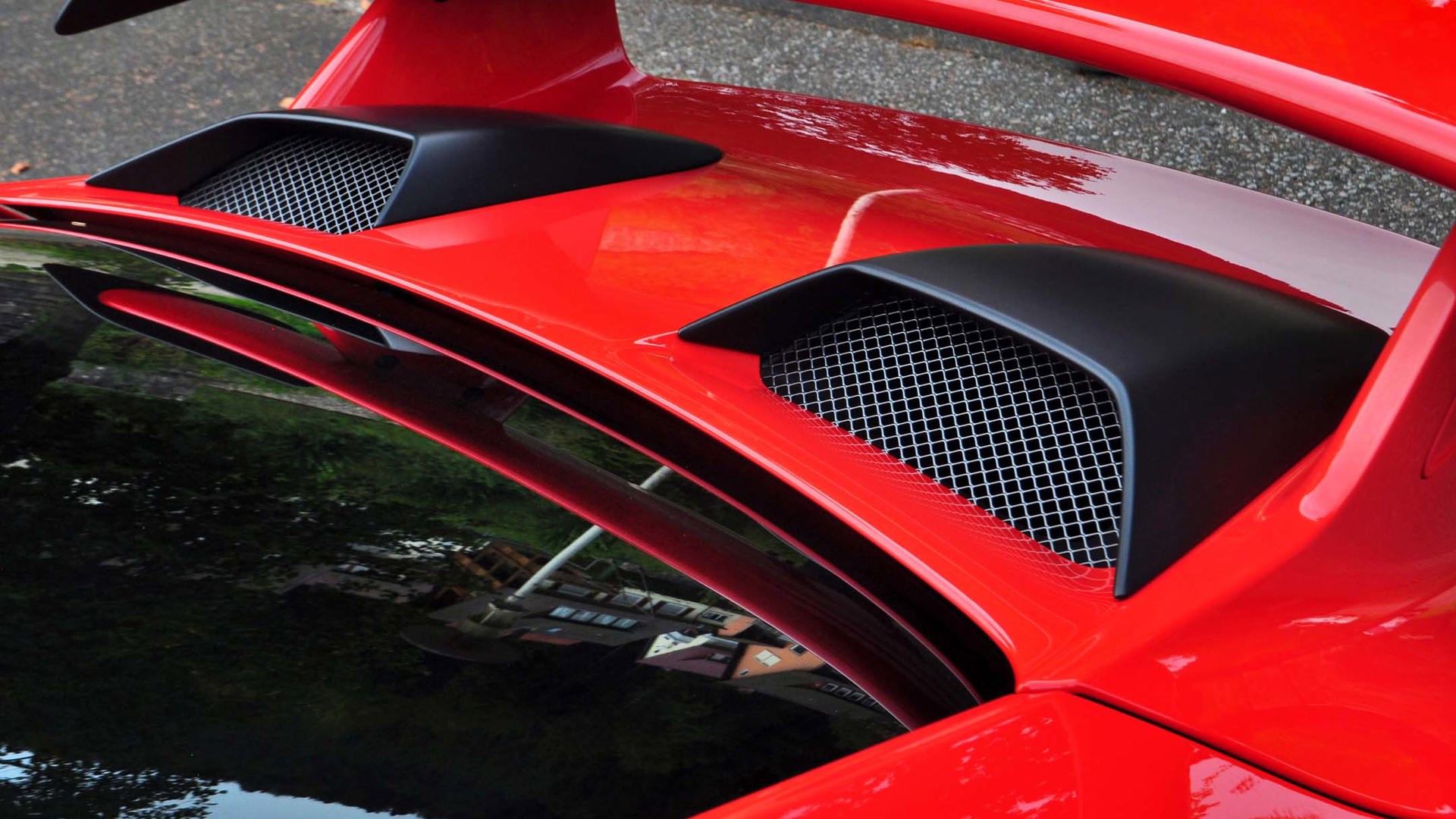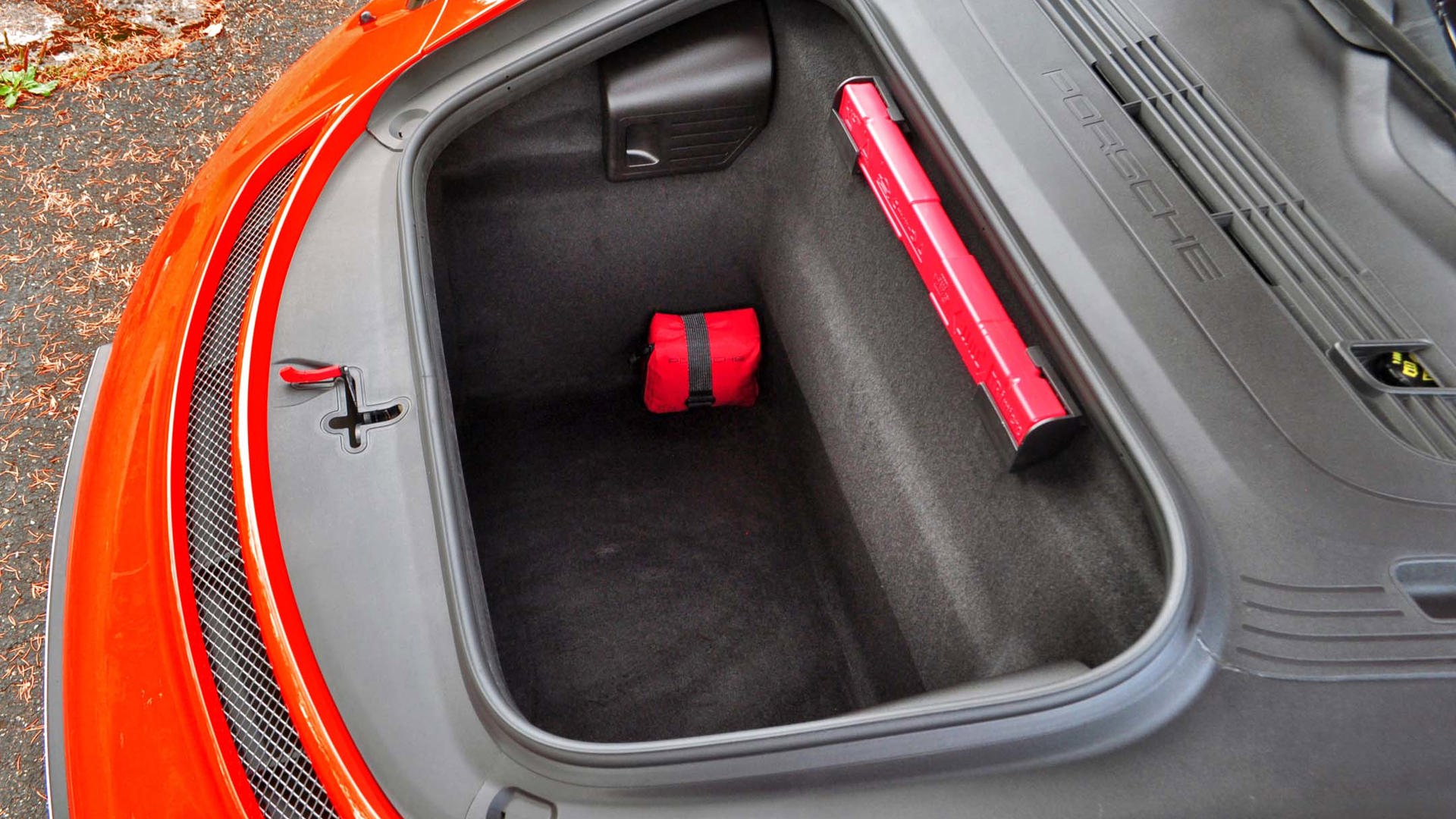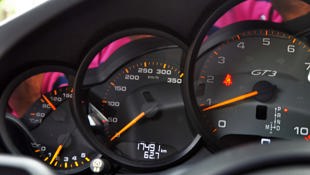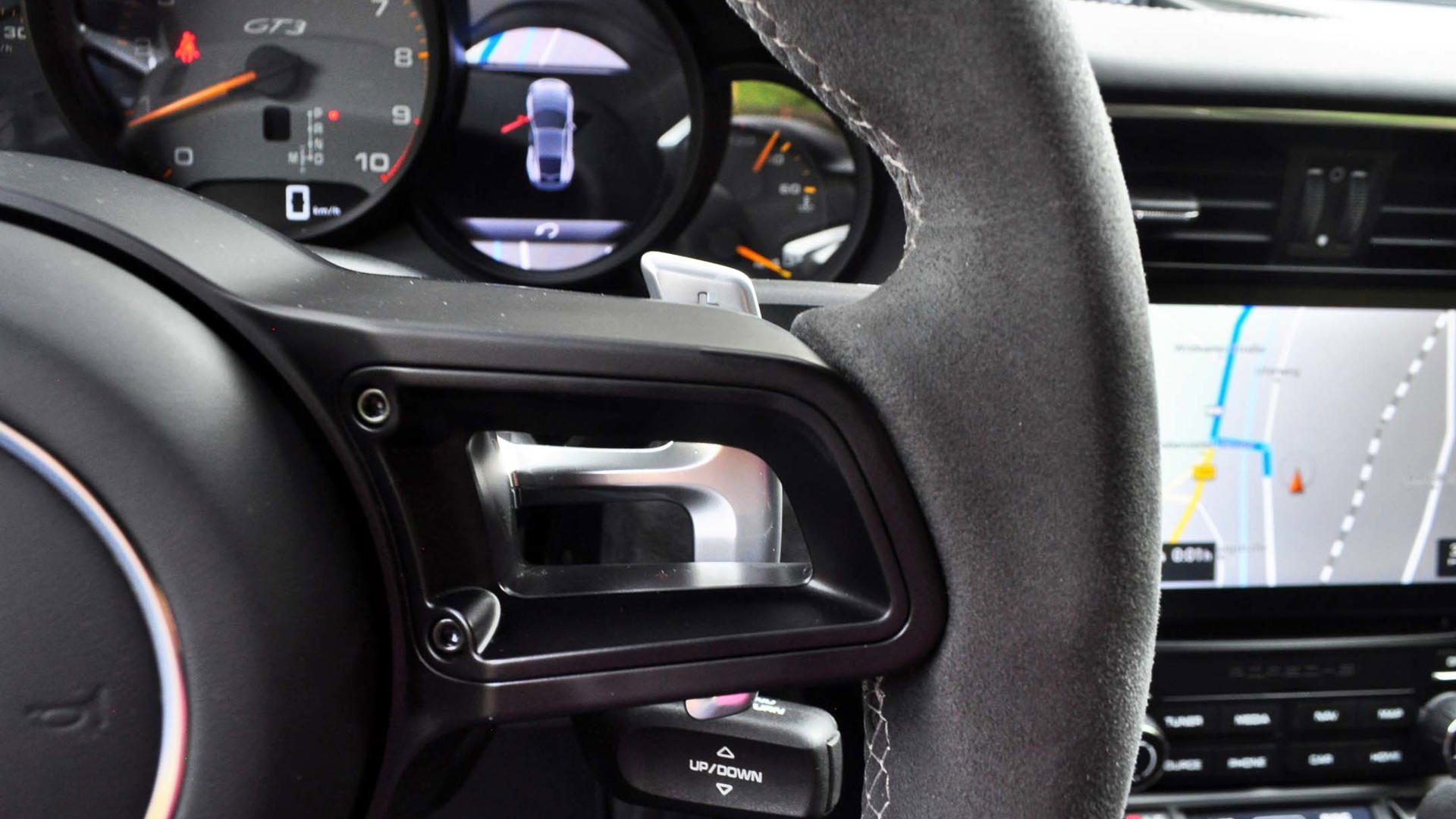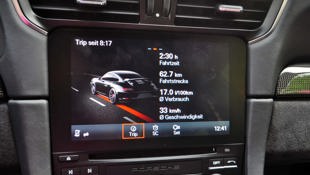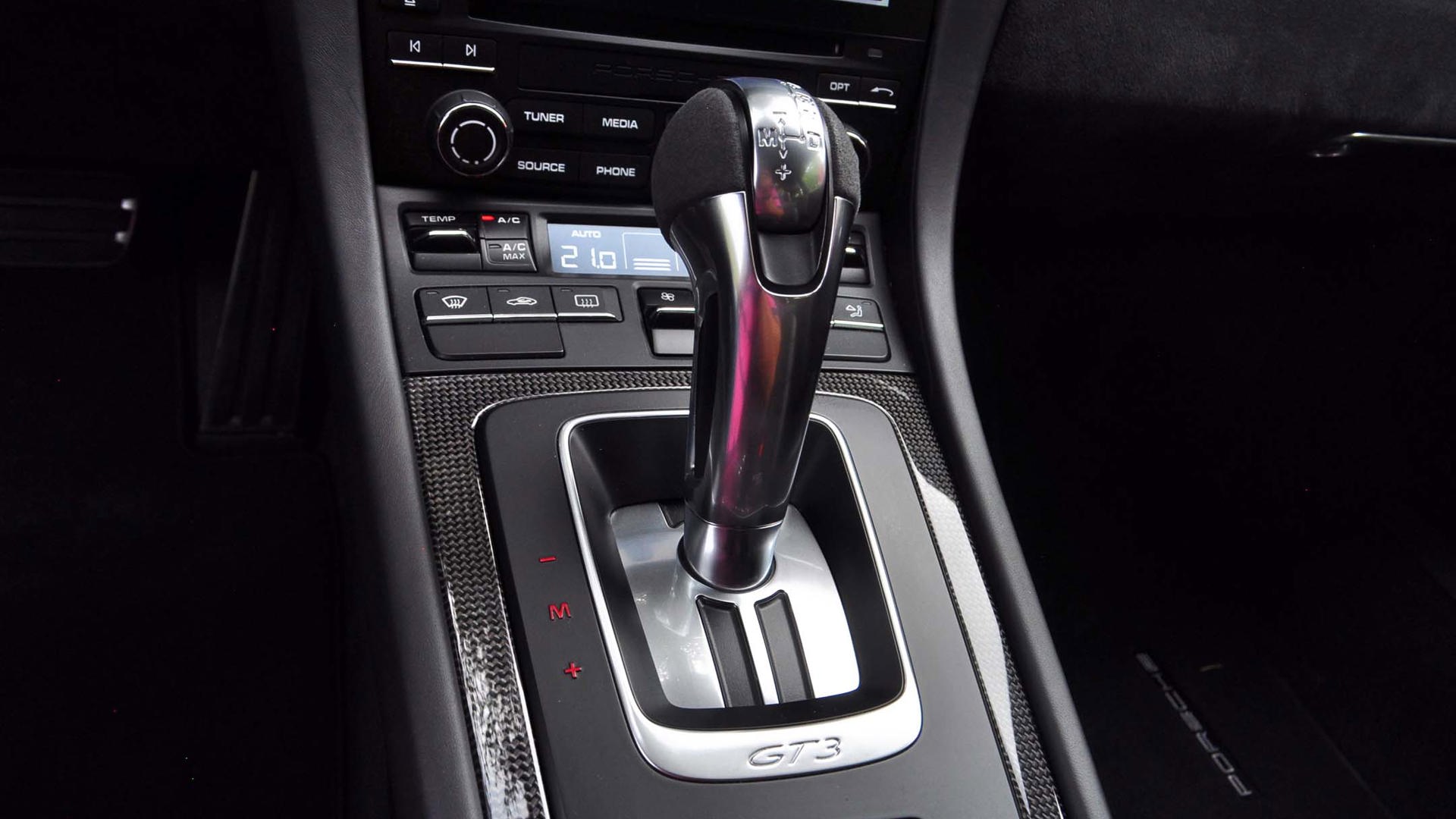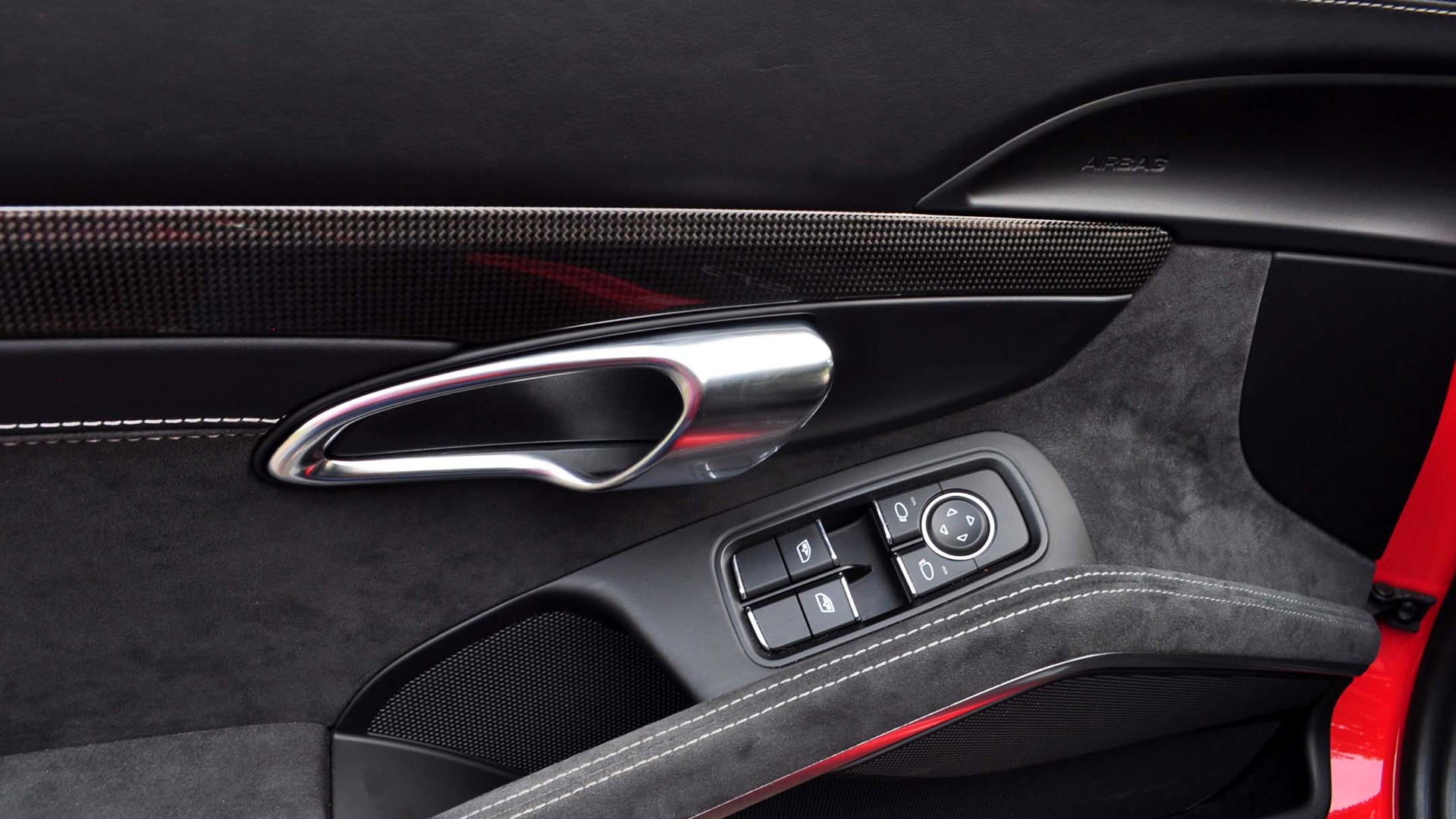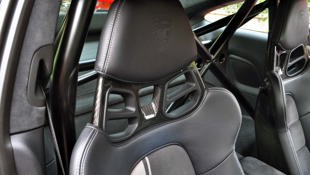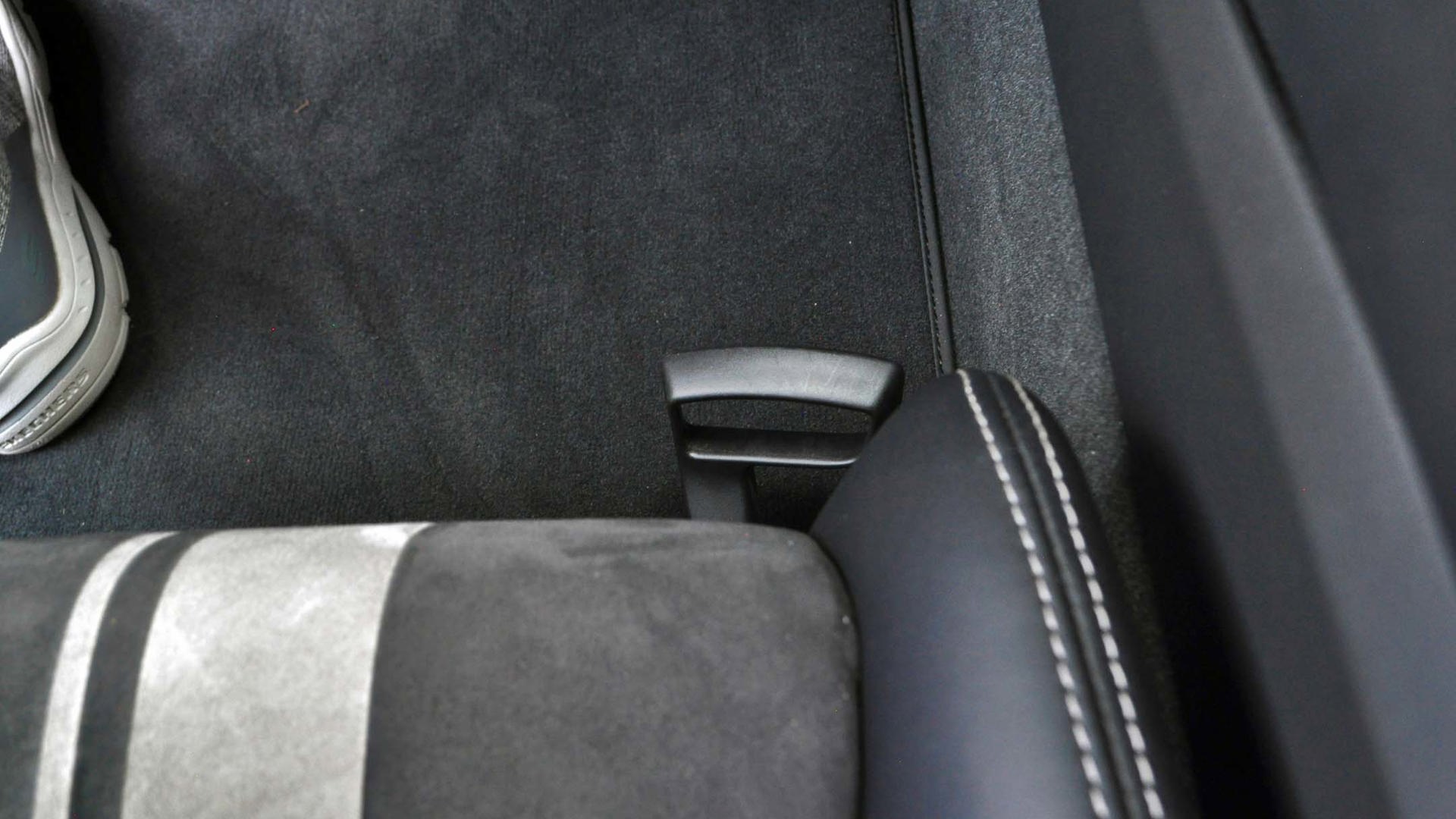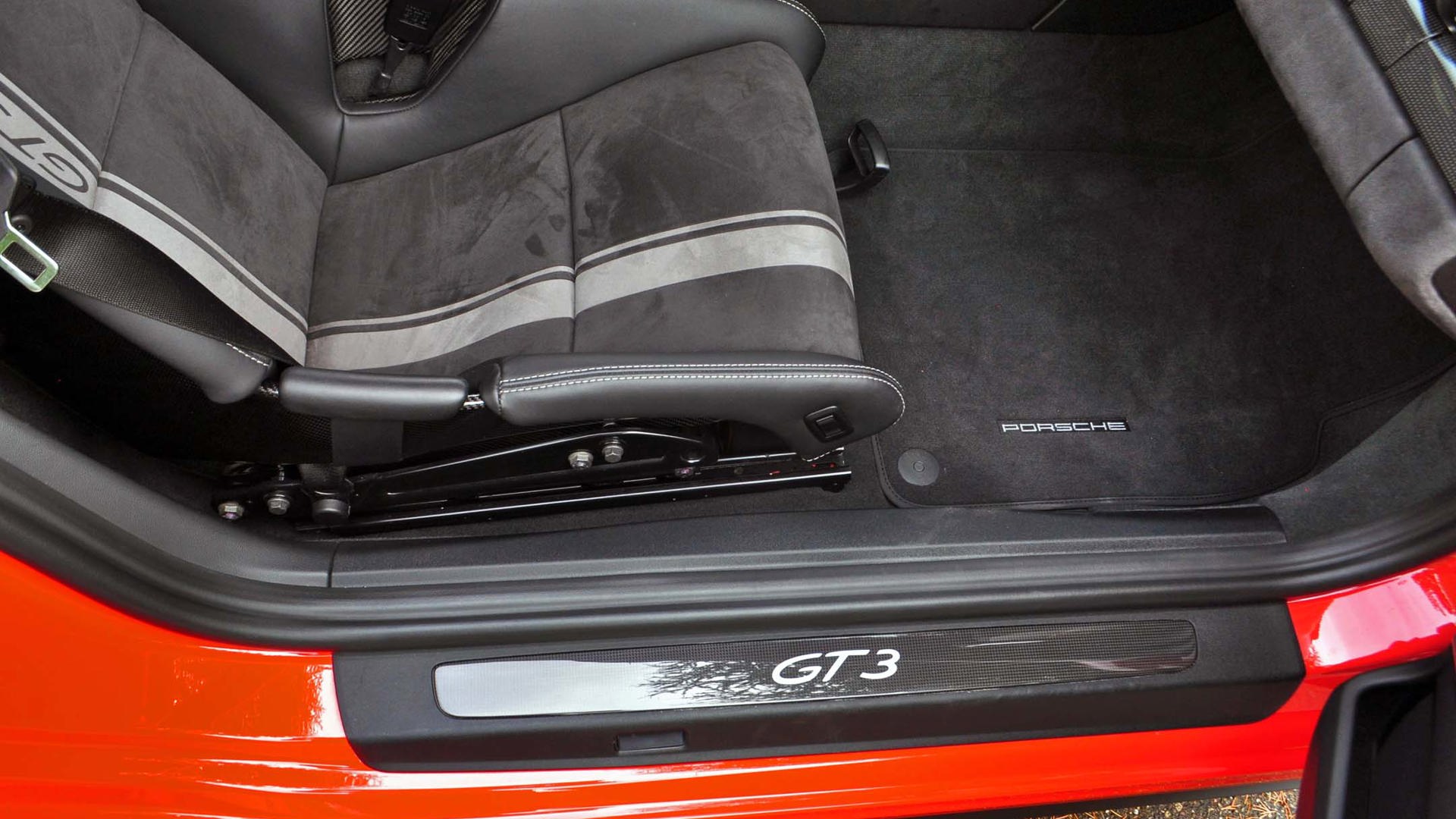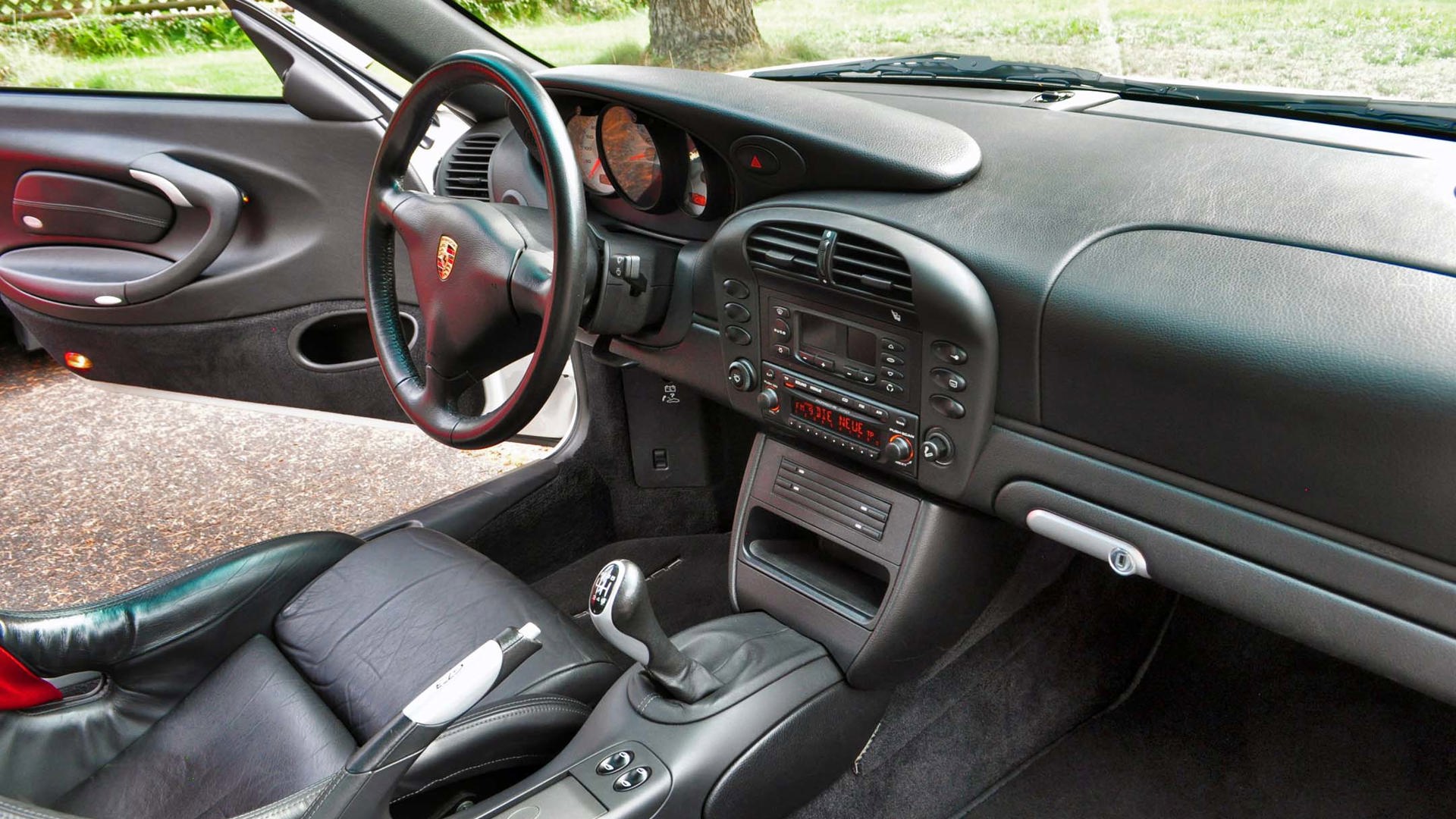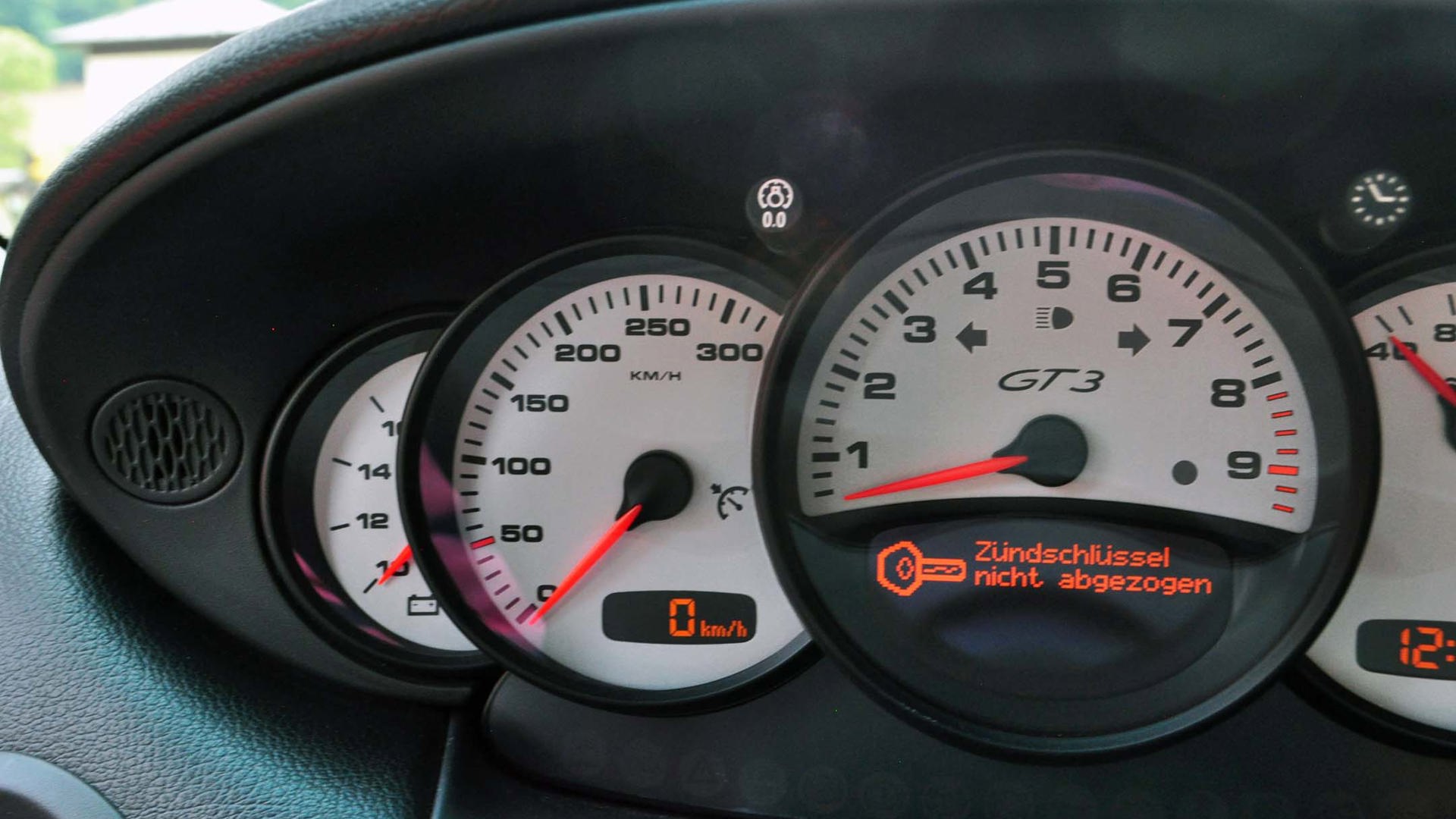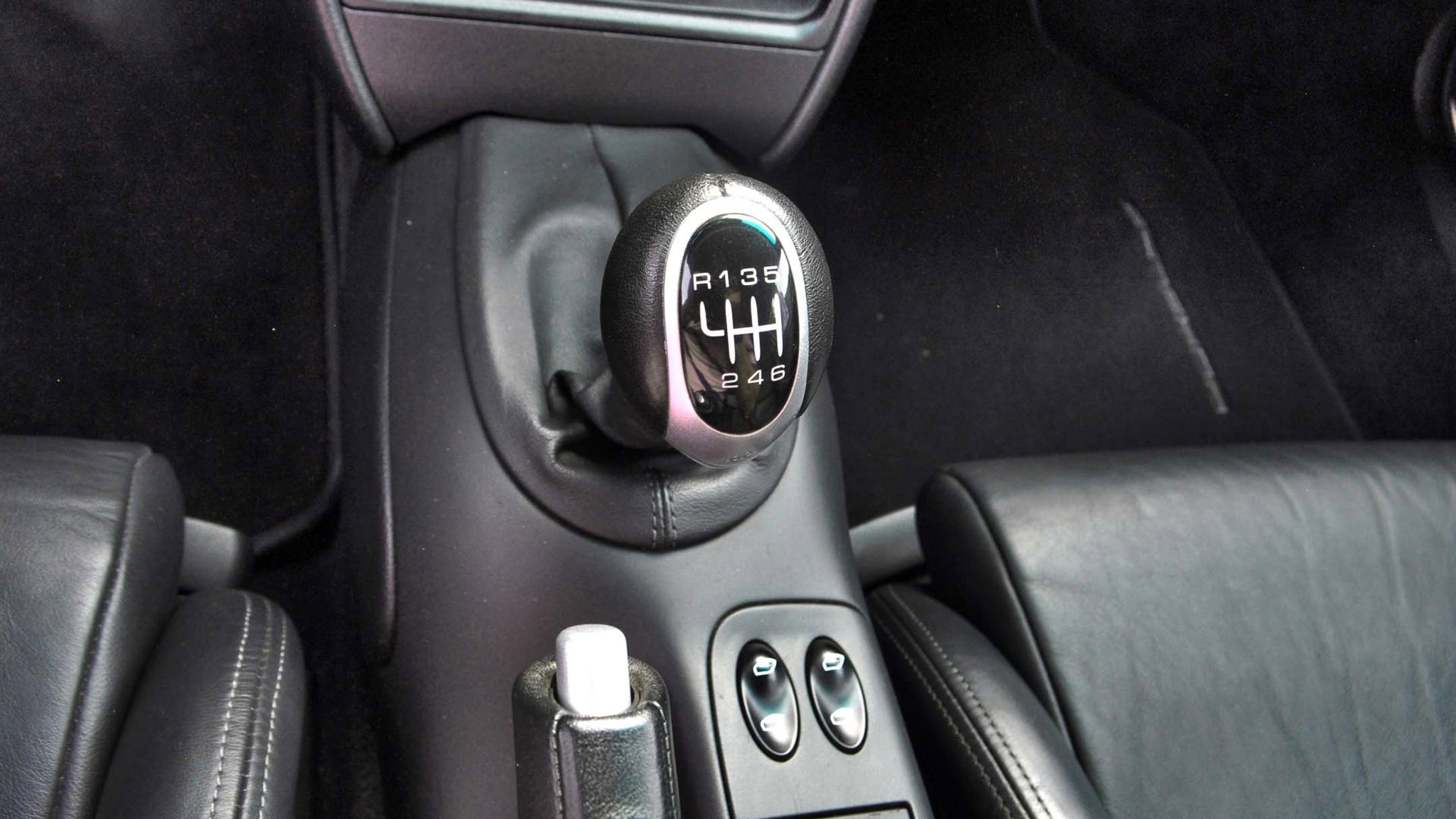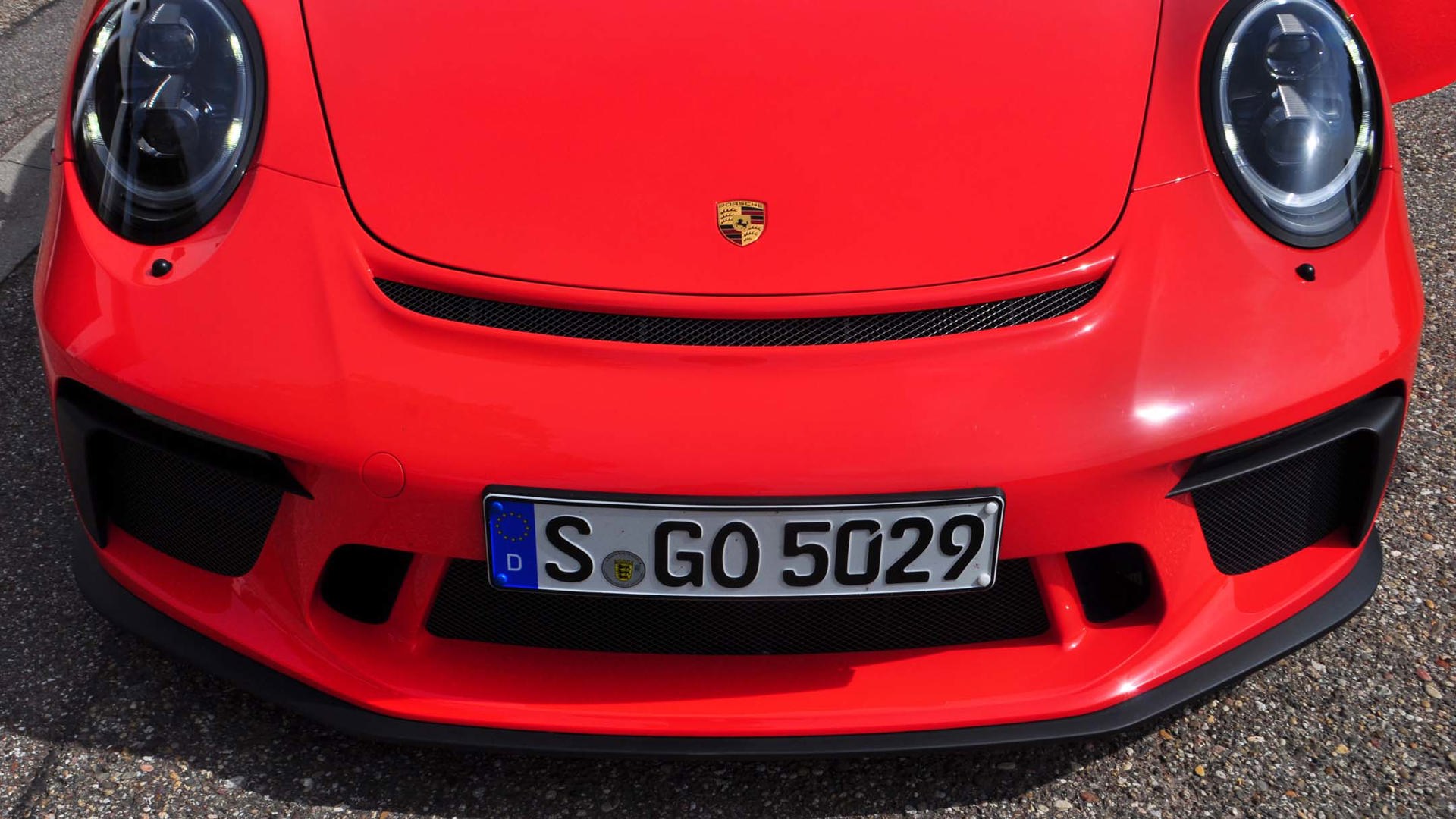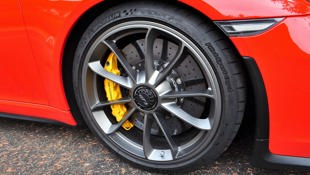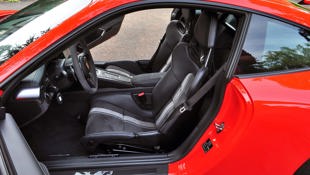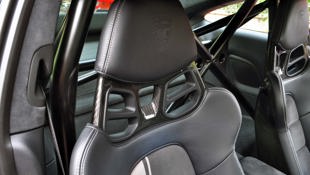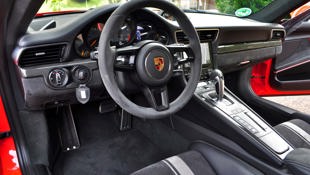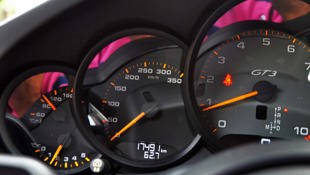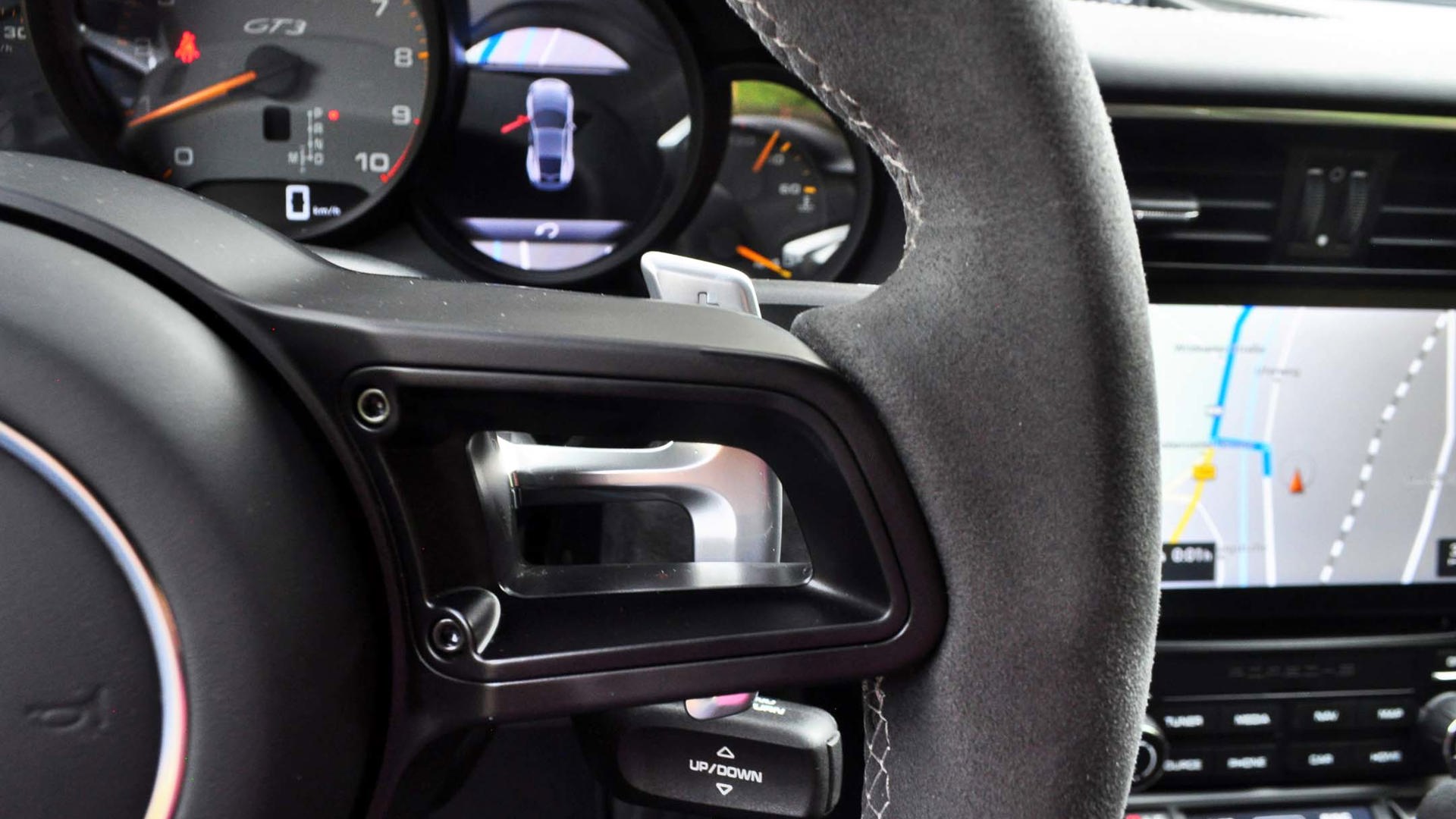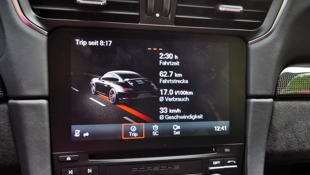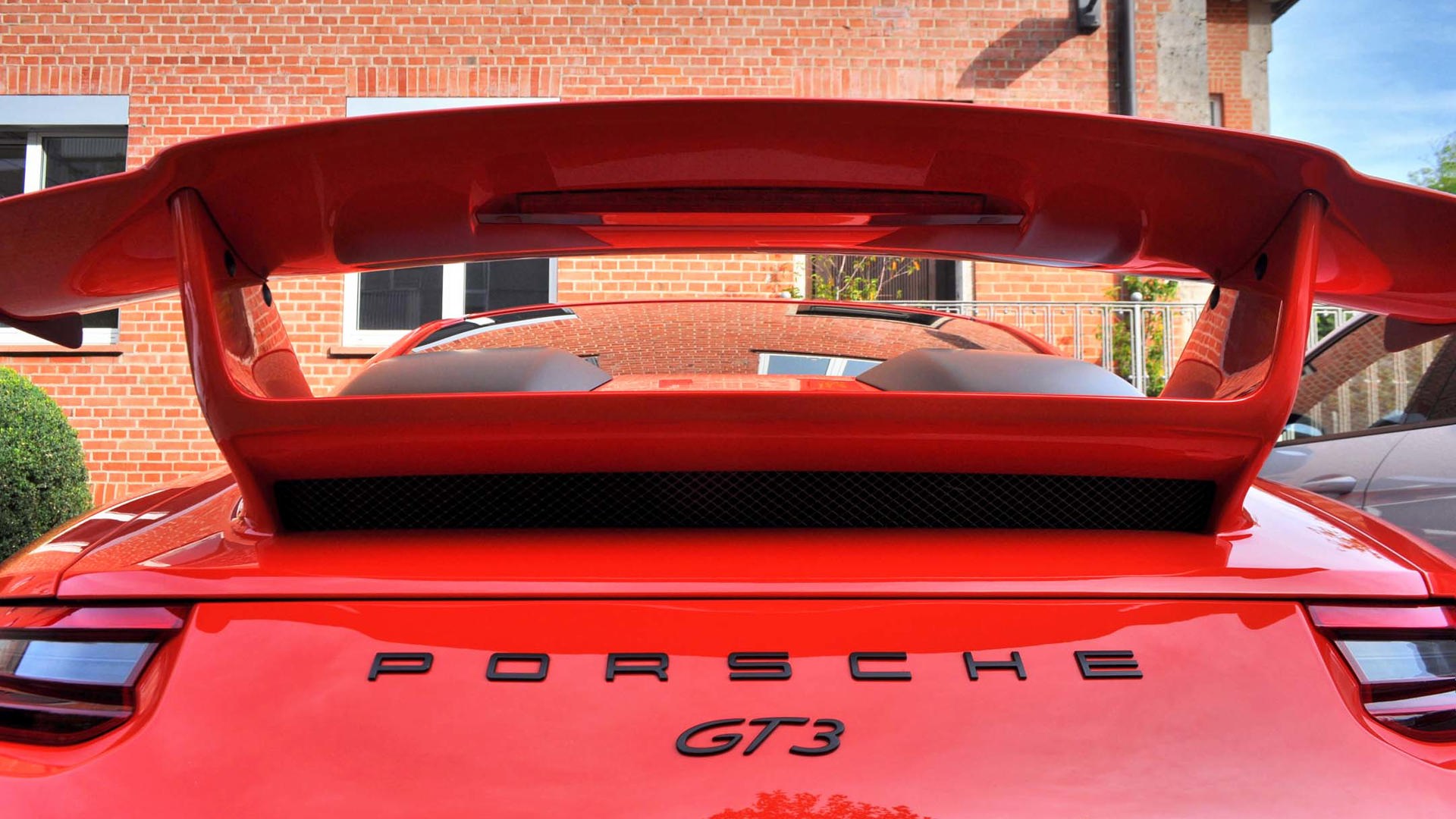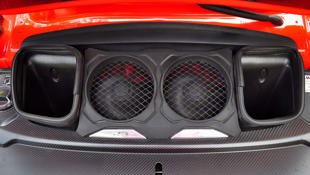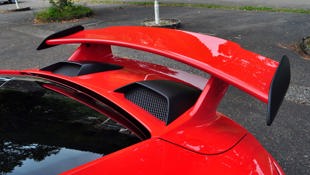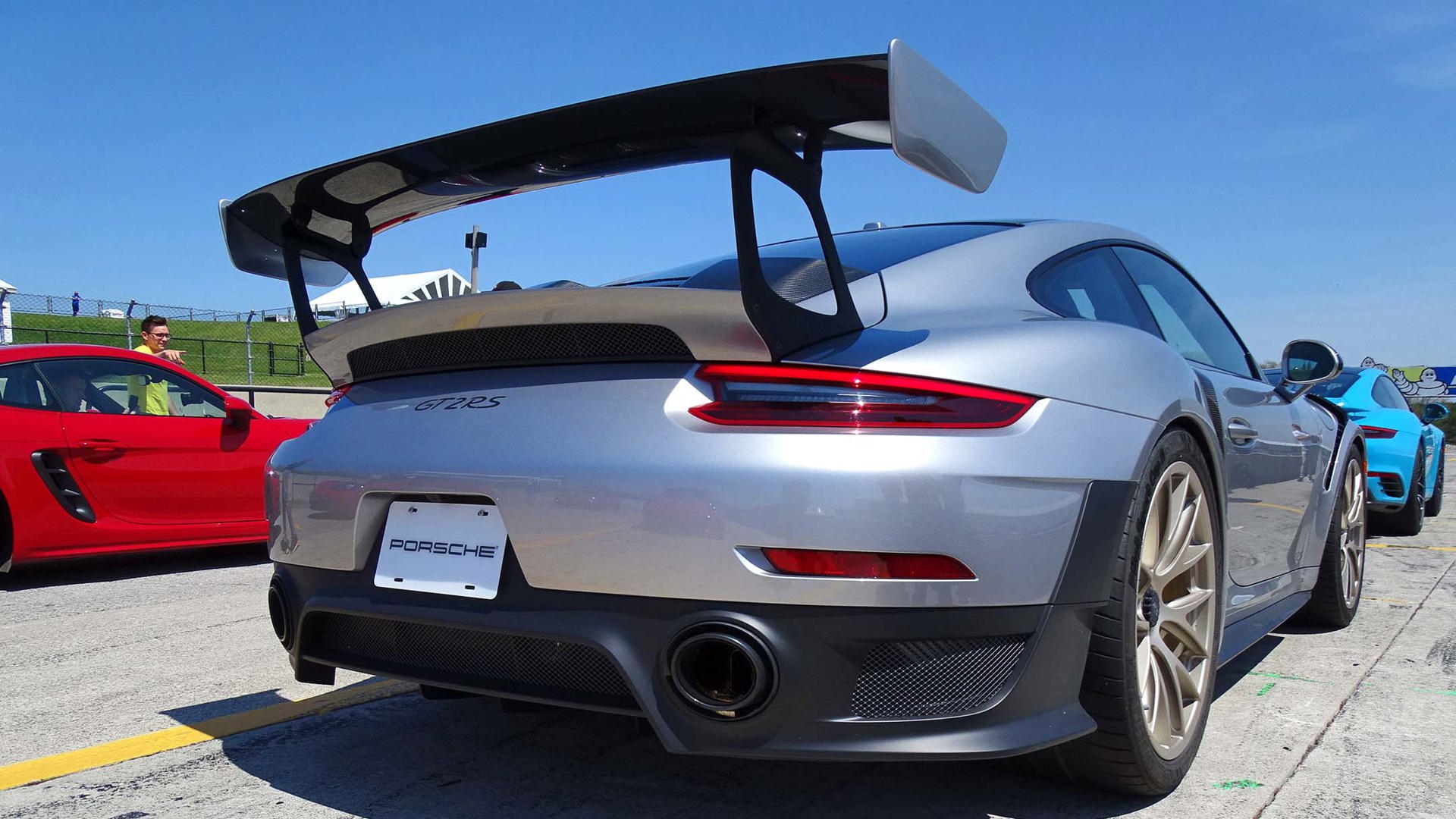With nearly all Porsche 911 models now turbocharged – whether they’re Turbo models or not – the 2017 model year marked the first year in Canada that consumers couldn’t buy a new, naturally aspirated 911, outside of a couple special-order models (911 R, GT3 RS).
This latest 991 version of the GT3 will offer a manual six-speed transmission when it arrives this fall.
Considering the very limited numbers of the special-order cars entering the country for 2017, the turbo takeover in Porsche’s extensive 911 line is essentially complete. That’s a major milestone considering that Porsche first introduced its original 911 Turbo as a special race-homologation special way back in 1975.
However, a temporary reprieve in the form of the 2018 Porsche 911 GT3 is set to arrive around October, and with it returns a familiar but updated tune to the 911 music library.
See, the GT3 is like the old-school rock of the modern 911 family: tastes, technologies, and times change, but it remains steadfast to the classic enthusiast track of “revs good, weight and subtlety bad”. So the GT3, for almost 20 years, has been automotive shorthand for “unfiltered driving pleasure” – always rear-wheel drive, always with minimal features inside, always with an audacious rear spoiler, and always naturally aspirated.
So no hybrid or turbo engines allowed, even if they’d provide more power or fuel economy or both. Those require extra battery or turbo hardware that brings extra weight and, even worse, the potential for non-linear engine response. It’s this immediate feedback that underpins the ideal of automotive sports car purity. And it’s the reason why some buyers will pay similar money for less power and fewer features for the 911 GT3 than, say, a lightly optioned 911 Turbo or slightly pricier but more tech-laden near-$200K sports cars such as the Audi R8 and Acura NSX.
Previously, the GT3’s “always” list included one other feature: a manual transmission. But that changed with the debut of the 991-generation version of the 911 GT3 in 2013. Porsche had decided that its latest PDK dual-clutch paddle-shifted transmission was faster and more responsive than the manual could ever be, and therefore – as with the 911 Turbo models – made the automatic seven-speed PDK the only transmission available.
Owners and enthusiasts howled in protest on both sides of the ocean. And Porsche listened.
Thus, this latest 991 version of the GT3 will offer a manual six-speed transmission when it arrives this fall.
Manual labour of love, power upgrades as well
That’s by far the headline update for the 2018 GT3, so it’s somewhat surprising that it was an automatic version on hand for our sampling of the car just outside where it’s built in Zuffenhausen, in a full day of highway ramp- and apex-hunting. Perhaps that’s why Porsche offered up a 996 GT3, of two generations prior, from the bowels of its impressive museum, located just across the street from the Zuffenhausen plant near Stuttgart, to underline that a manual six-speed transmission has long been a key part of the GT3’s enthusiast appeal. Porsche may just happen to be building batches of PDK GT3s first – which will likely outsell the manual GT3s still, as they did for years on Ferraris and Lamborghinis, back when both were offered – but Porsche enthusiasts and collectors who want a unique 911 will be very happy to have that choice again.
But that resurrected option is not the only drivetrain upgrade of note on the new GT3. Its naturally aspirated flat-six grows from 3.8L to 4.0L in displacement, which now puts out 500 hp (vs 469 hp) and 339 lb-ft of torque. Surprisingly, those are the exact same outputs as its even more extreme (and extremely stripped) 911 GT3 RS stablemate.
Even more notable than the impressive power output is this car’s shrieking 9,000 rpm redline. Yes, that’s Honda S2000-levels of sky-high revs, but with an engine twice as large and not a wheezy chihuahua at low rpm. Sure, it’s not the hang-on-for-dear-life thrust of a 911 Turbo below 5,000 rpm, since it still needs to be in the top half of that rev range to make your eyes bulge with adrenaline.
But it’s scary loud and quick once you rip it past 7,000 rpm. Especially anywhere near a tunnel.
Porsche quotes a 0–100 km/h time of 3.4 seconds with launch control engaged, and a top track speed of 315 km/h. The PDK manages to cut the GT3’s 0–60 mph (96.6 km/h) time to 3.2 seconds, compared to 3.8 seconds for the manual transmission version.
A labour to get into and out of, and as a daily driver
It’s these types of numbers that speak to the excitement of driving the GT3. But the real-world experience of driving a GT3 is not all rips to redline and heart-pounding exhilaration. In fact, it can be downright painful. The GT3 driver has to be willing to make some creature-comfort sacrifices at the altar of high performance. And it all begins with the toughest part of driving the GT3: getting in and out of it.
The latest GT3 has side bolsters that could keep Blackcomb mountain from moving around in an earthquake. This is not the best car in which to transport less-mobile types, clearly. Plus it’s missing a host of optional and standard items from other, often less-expensive trims. The “luxury” purge means there’s no back-up camera or beeping sensors (neither front nor rear), so there’ll be lots of twisting and straining to see out the back.
Combine that with the massive rear wing that takes up most of your rear window view, and you’d swear Porsche product planners conspired to make parking manoeuvres more difficult and stressful here than in a mid-trim Corolla. You’ll be using those rear-view mirrors much more often than usual, so it’s a good idea to keep a pair in the car.
Even basic commuting can grow tiresome after a while, as it’s missing basic niceties such as redundant steering-wheel controls for any radio, volume, or cruise functions. This leaves it adorned only with oversized shift paddles, which move along with the steering wheel’s hub so that they’re always well-placed for an immediate shift.
996 versus 991
It was fascinating to hop out of the latest ’18 GT3 and into history with our white 996 GT3 companion. The 996 was much easier to climb in and out of, though its ride felt comparatively harsh next to the electronically adjustable one in the GT3.
The manual certainly increases the involvement and thus the entertainment value for the driver, though its pedals were not as exquisitely spaced for heel-and-toeing as I had hoped. The interior of the 996 was very plain compared to the two-tone Alcantara and leather of the seats in the latest GT3, which also features carbon-fibre accents to suggest its serious race intent.
Just looking at the two of them side by side, however, and it’s clear how much more aggressive the 2018 GT3 has become. Not only has the wing become larger and more pronounced, but there are now large black (versus body-colour) air intakes shoved underneath that rear wing.
In the end, Porsche is one of the few companies that have figured out how to somehow charge its customers more money for fewer features and less weight – a formula which has helped them put out quite a few successful, lightweight performance models (Spyder, GT3, GT4, GT R, etc.). This latest GT3 will appeal mightily for those hardcore Porsche track enthusiasts that appreciate the linearity with which the power can be applied and delivered at precisely the right moment by the driver’s right foot.
And even if manual transmissions have gone past their best-before date when it comes to advanced technology, the stick and high-revving engine together provide enough to make the 2018 Porsche 911 GT3 a very special beast in a sea of 911 choices.
